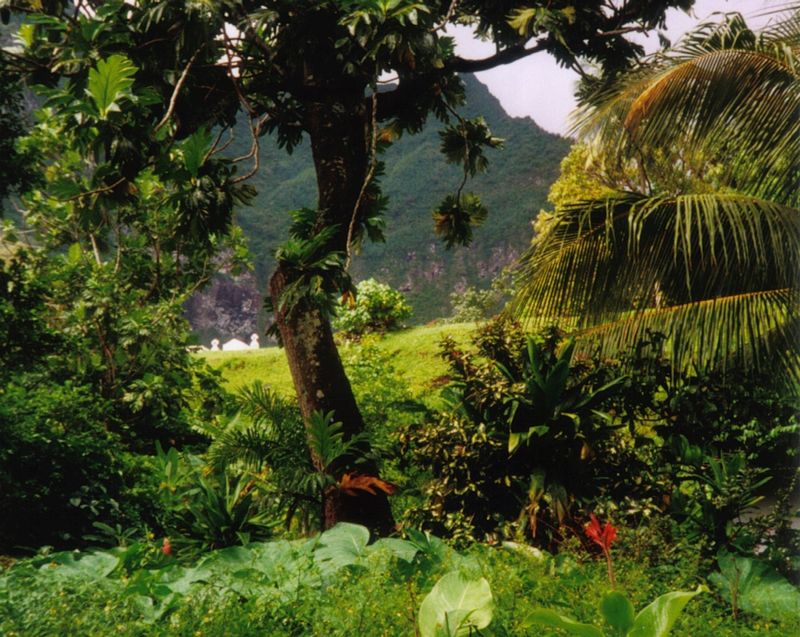Notes on Management of Natural Resources Class 10
Class 10
Welcome to the article on Notes on Management of Natural Resources Class 10, where we will explore the various aspects of natural resource management and its significance in creating a sustainable future. Natural resources are vital to human existence and their effective management is essential for meeting the needs of the present generation without compromising the ability of future generations to meet their own needs. In these notes, we will discuss the importance of natural resources, their distribution and utilization, and the challenges of managing them sustainably. We will also examine various strategies for managing natural resources, including conservation, sustainable use, and equitable distribution. By studying these notes, students will gain a deeper understanding of the complex issues surrounding natural resource management and the role they can play in creating a more sustainable future.
We can call anything in the environment that can be used a natural resource. The components of the atmosphere, hydrosphere, and lithosphere contribute to the production of necessities and comforts for mankind. Therefore, natural resources encompass the total natural environment that supports human life.
Types of Natural Resources
On the basis of abundance and availability, the natural resources are of two types
- Inexhaustible.
- Exhaustible.
(a) Inexhaustible: These are in plenty and cannot be exhausted by man’s consumption. For example; air, sand, clay etc. It gets affected by the over-population of mankind.
(b) Exhaustible: These are limited and can get exhausted over a period of time, i.e., coal, petroleum etc.
Management of Natural Resources -Notes on Management of Natural Resources Class 10
We call the system of controlling the use of natural resources in such a way as to avoid wastage and use them effectively as the management of natural resources.
There are several reasons why we need to manage our natural resources, including:
- The earth's resources are limited, and with the rapid increase in human population, the demand for resources is constantly rising.
- Proper management ensures that natural resources are used judiciously to fulfill the needs of the present generation and also last for future generations.
- Effective management takes a long-term perspective and prevents short-term exploitation for immediate gains.
- Equitable distribution of natural resources is ensured so that all people can benefit from their development.
- Management considers the environmental damage caused during extraction or use of natural resources and seeks ways to minimize this damage.
These points highlight the importance of managing our natural resources to ensure their sustainability and equitable distribution for the benefit of both present and future generations.
Conservation of Wildlife
To maintain ecological balance in nature and preserve the gene pool, it is crucial to conserve wildlife. Here are some steps that can be taken for their conservation:
- Make laws to ban the poaching or capturing of any animal or bird belonging to an endangered species.
- Preserve the natural habitats of wild animals and birds by establishing National Parks and Sanctuaries across the country.
- Conduct periodic surveys in all forests, National Parks, and Sanctuaries to determine the population of all species of wild animals and birds.
- Pay special attention to the conservation of endangered species to prevent their extinction.
- Immediately curb the unauthorized felling of forest trees for timber trade and fuel-wood.
By taking these measures, we can conserve wildlife, maintain ecological balance in nature, and preserve the gene pool for future generations.
Forest and wild life conservation

Forests are biodiversity hot spots. Biodiversity of an area is the number of species of different life forms like bacteria, fungi, powering plants insects, birds, etc.
Hotspot means an area full of biological diversity. Loss of diversity may lead to a loss of ecological stability/ecological imbalance
Stakeholders

Sustainable Management - Notes on Management of Natural Resources Class 10
To ensure forest resources are available for future generations, it is important to manage them wisely. To consider forest conservation, we must look at the stakeholders, including:
- People who live in or around forests and depend on forest products for various aspects of their life.
- The Forest Department of the Government that owns the land and controls the forest resources.
- Industrialists who use various forest products, from tendu leaves to make bidis to paper mills.
- Wildlife and nature enthusiasts who want to conserve nature in its pristine form.
- A major program called silviculture that has been started to replenish the forests by growing more trees and plants.
By involving all stakeholders and implementing silviculture programs, we can ensure the wise management of forest resources for the benefit of future generations.
Conservation of forests -Notes on Management of Natural Resources Class 10
The following methods are used to carry out forest conservation:
- Afforestation: This involves growing forests on unprotected barren lands. Both government and voluntary agencies carry out the Van Mahotsava tree plantation movement twice a year (in February and July).
- Reforestation: This involves developing forest cover in areas that have been damaged or cleared during exploitation.
- Separation of Commercial Forestry: Useful plants required by the industry should be planted separately, preferably on waste land. This is called production plantation.
- Regulated Grazing: Grazing should be regulated according to the availability of pasturage.
- Deforestation: The removal, decrease, or deterioration of forest cover in an area is called deforestation.
By implementing these methods, we can promote forest conservation and ensure the sustainable use of forest resources.
Effects of Deforestation - Notes on Management of Natural Resources Class 10
The following are the impacts of environmental degradation:
- Soil Erosion: When plant cover is removed, it exposes the fertile soil to wind and water. This leads to the removal of topsoil, making the area infertile.
- Desertification: The removal of forest cover in the plains makes the area dry. During the hot season, the soil becomes loose. Air currents take away the fine soil particles, leaving behind sand.
- Floods: During the rainy season, many temporary rivulets are formed due to the loss of absorption capacity by unprotected soil. The rivulets produce floods in low-lying areas, causing damage to agriculture, property, and life.
- Destruction of Wildlife: Deforestation leads to the destruction of natural habitats of wild animals and plants, resulting in the loss of wildlife.
- Climatic Changes: In the absence of forest cover, summers become hotter while winters become extra cool. The frequency of rainfall also decreases.
These impacts highlight the need to address environmental degradation and promote conservation efforts to ensure sustainable development.
National Award for Wildlife Conservation
Recently, the Government of India established the 'Amrita Devi Bishnoi National Award' for wildlife conservation in memory of Amrita Devi. In 1931, Amrita Devi and 363 others sacrificed their lives for protecting the 'Khejri Trees' in Kherali Village near Jodhpur, Rajasthan.
Chipko Andolan - Notes on Management of Natural Resources Class 10

In the early 1970s, people in Garhwal initiated a movement at the grassroots level to end the alienation of people from their forests. This movement, known as the Chipko Movement or Chipko Andolan, involves villagers embracing and forming a circle around the marked trees to compel the axeman to stop tree felling. It is a tree-hugging movement aimed at protecting forests. One example of the success of this movement is the protection of the Sal Forest in West Bengal in 1972.
Water as a Resource
- All terrestrial forms of life require water as a basic necessity.
- Regions experiencing water scarcity are closely linked to areas of acute poverty.
- Loss of vegetation cover, diversion for high water demanding crops, and pollution from industries and urban waste, as well as less rainfall, are consequences of failing to sustain water availability.
- Various irrigation methods such as dams and tanks should be implemented in different parts of India to manage water resources effectively.
Advantages of Dams
- Water from a dam is used for irrigation in fields through a network of canals. Dams ensure round the year water supply to the crop fields and help raise agricultural production.
- Water from a dam is supplied to the people in towns and cities through pipelines after suitable treatment. In this way, construction of dams ensures continuous water supply in the region.
- The falling water (or flowing water) from the dam is used for generating electricity. The water rushing down the dam turns turbines which run electric generators.
Disadvantages of Dams
- High-rise dams submerge human settlements, rendering many people homeless and creating social problems.
- Construction of high-rise dams contributes to deforestation, loss of biodiversity, and ecological imbalances due to the submergence of a variety of flora and fauna, leading to environmental problems.
- The construction of high-rise dams involves spending a massive amount of public money without generating proportionate benefits, leading to economic problems
Forests: Forests are important renewable natural resources dominated mainly by trees forming a sort of canopy, they are essential for the ecological balance of all ecosystems. They maintain the biological ecosystem.
Water Harvesting: Aim is to develop primary resources of land and water and to produce secondary resources of plants and animals for use in a manner which will not cause ecological imbalance.
Various ancient methods of water harvesting
| Methods | State |
| Khadin, tanks, nadis | Rajasthan |
| Banderas, tals | Maharashtra |
| Bundhis | Madhya Pradesh and U.P. |
| Pyhes and Pynes | Bihar |
| Kulhs | Himachal Pradesh |
| Ponds | Jammu Region |
| Eris (tanks) | Tamilnadu |
Baylis
The people in Delhi and nearby regions used an old method of water harvesting, which was locally specific to prevent mismanagement and over-exploitation of these resources.
The Water Harvesting System has the following advantages:
- It prevents water from evaporating.
- It helps in recharging wells and provides moisture for vegetation.
- It does not create breeding grounds for mosquitoes.
- It protects ground water from contamination by human and animal waste at specific points.
Pollution of Water - Notes on Management of Natural Resources Class 10
People cause water pollution by dumping untreated sewage and industrial wastes into it.
Two factors typically indicate the contamination of river water:
- The presence of coliform bacteria in the river water.
- The measurement of pH of the river water, at specific points.
Gangs Action Plan (GAP)
In 1985, the Multicore project introduced an initiative to improve the quality of the Ganga river. The project formulated the Ganga Action Plan (GAP) with the goal of reducing the pollution load of the river by over 75%. The project periodically tested the water quality by checking the coliform count (a group of harmless bacteria found in the human intestine) per 100 ml.
Coal and Petroleum Conservation
Coal and petroleum, which are non-renewable and exhaustible resources, are two types of fossil fuels found in the earth's crust. Coal is a combustible fossilized rock formed from a large accumulation of plant remains that undergo gradual compression. It finds usage in cooking, heating, industries, and thermal power plants. On the other hand, petroleum is a liquid fossil fuel that occurs in the form of oil and has been formed from plant and animal remains in the past (about 10 to 20 crore years ago). It occurs as mineral oil in sedimentary rocks and is primarily used as fuel for transportation, agricultural operations, generators, and some industries.
Methods of Conservation of Fossil Fuels
- To avoid air pollution caused by burning of coal, it is recommended to refrain from direct usage of coal for this purpose.
- Coal gasification can be used to convert coal into liquid fuel and compressed natural gas (CNG).
- Techniques should be developed to maximize the recovery of fossil fuel from deep mines and wells and to avoid wastage during extraction and transportation.
- Measures should be taken to protect oil wells and coal mines from fire to prevent wastage, pollution, and loss of life and property.
- To save oil for future use, over-consumption of oil in automobiles should be curbed, as there are only a limited number of years left before depletion.
- Encouraging the use of alternative sources of energy, such as hydroelectric, nuclear, solar, wind power, and biogas plants, should be prioritized.
Steps for Conservation of Energy Resources
- Save electricity, water, etc. by not using when not required.
- Use energy efficient electrical appliances to save electricity.
- Use pressure cooker for cooking food.
- Use solar cookers.
- Encourage the use of biogas as domestic fuel.
- Fuel efficient motor vehicle should be designed to reduce consumption of petrol and diesel.
Download the eSaral App for complete Class 10 Video lectures, Study material, revision and much more.
Notes on Management of Natural Resources Class 10
